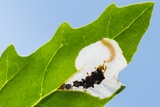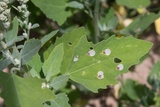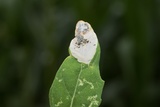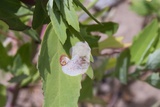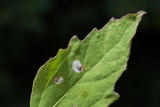Chrysoesthia sexguttella (Thunberg, 1794) Species
Last modified: Nov. 30, 2025, 3:41 p.m.
A fairly common species in the northern part of Belgium, elsewhere rare. A species of waste ground and cultivable land.
Details
- Classification
- Family: Gelechiidae > Subfamily: Apatetrinae > Tribus: Apatetrini > Genus: Chrysoesthia > Species: Chrysoesthia sexguttella
- Vernacular names
- Zesvlekmot (NL), Six-spot Neb (EN), Sechsfleck-Palpenmotte (DE)
- Synonyms
- Chrysoesthia naeviferella (Duponchel, 1843) and Chrysoesthia stipella sensu auct.
- First mention in Belgium
- Fologne E. 1862b. Observations sur quelques Lépidoptères observés en Belgique. — Annales de la Société entomologique belge 6: 161–169. On page 167.
- Status
-
Native
Distribution
Caterpillar
Head brown; prothoracic plate blackish, bisected by light medial line; abdomen yellowish or greenish with brownish dorsal line and reddish, lateral spots; more reddish when mature; anal plate brownish (Gregersen & Karsholt 2022).
Bionomics
The larva makes a mine in the leaves of the host plant. It starts as a slender gallery, leading abruptly to a large whitish blotch, sometimes occupying most or all of the leaf. Pupates in a cocoon amongst detritus on the ground.
The adults come to light.
Flight periods
The adults have been seen from mid-April towards mid-September in two generations a year. Most observations during May and July.
Observed on
- Host plant (genera):
- Chenopodium and Atriplex
The larva lives on Chenopodium or Atriplex species.
Habitat
It inhabits meadow land and waste ground.

